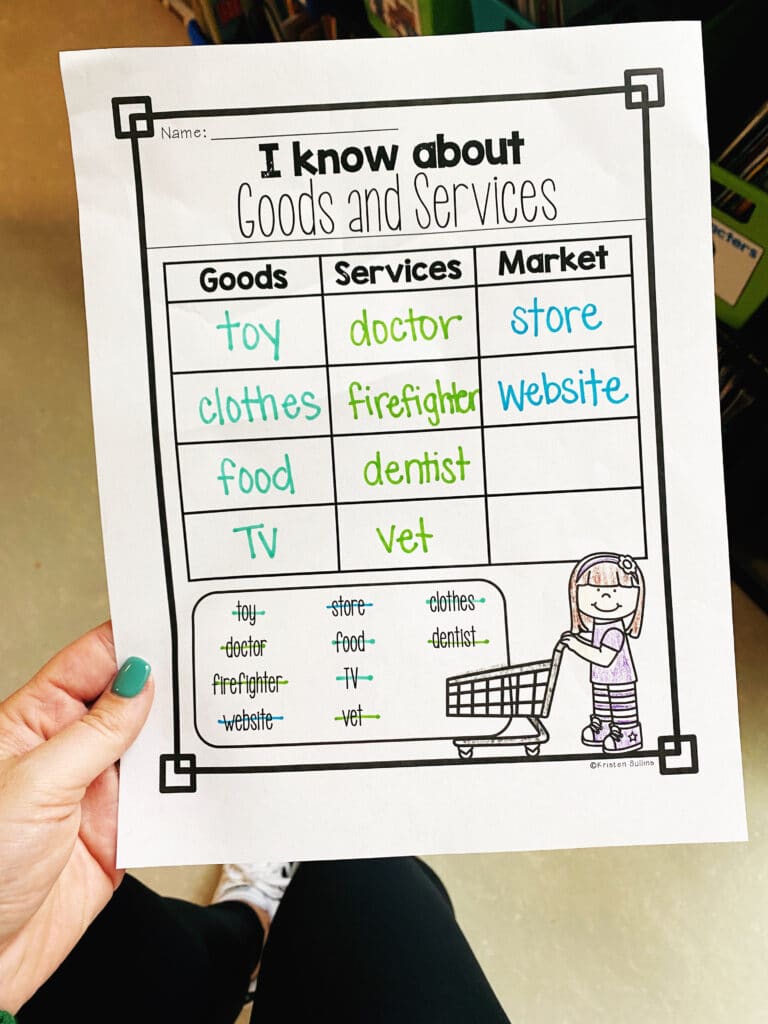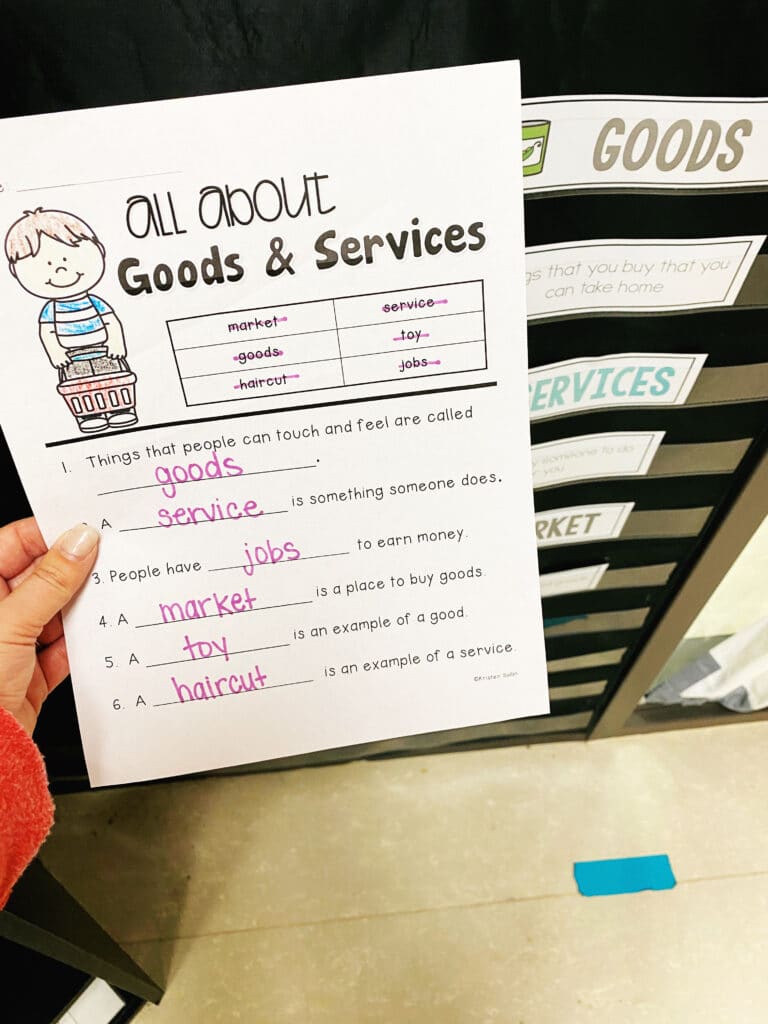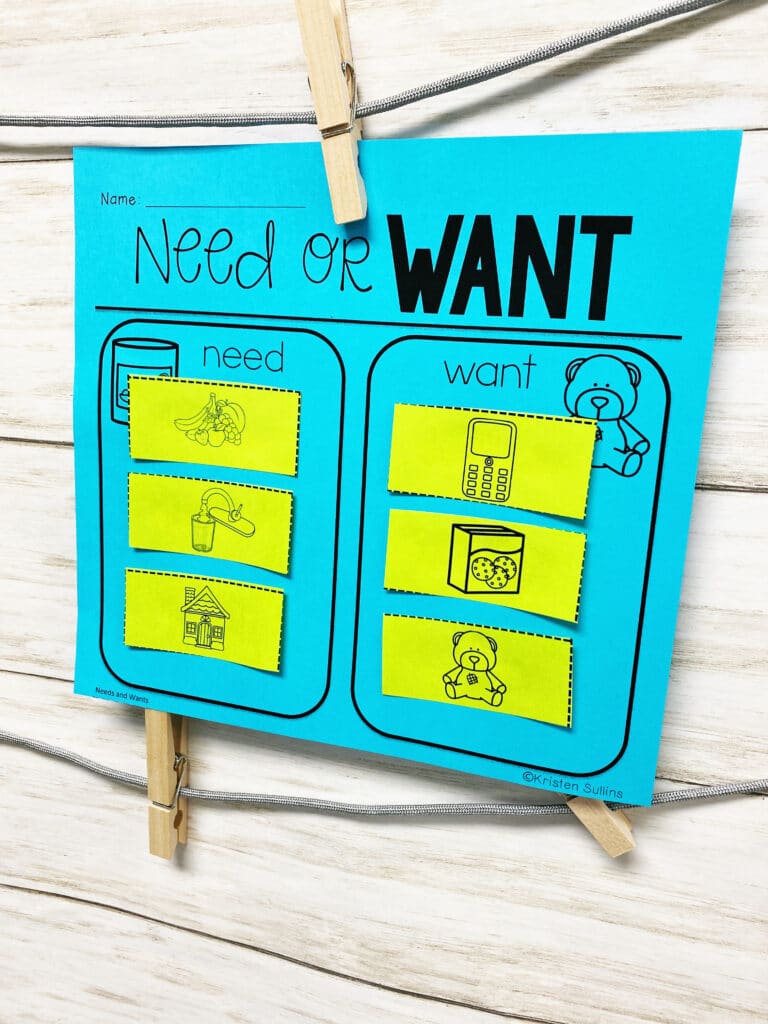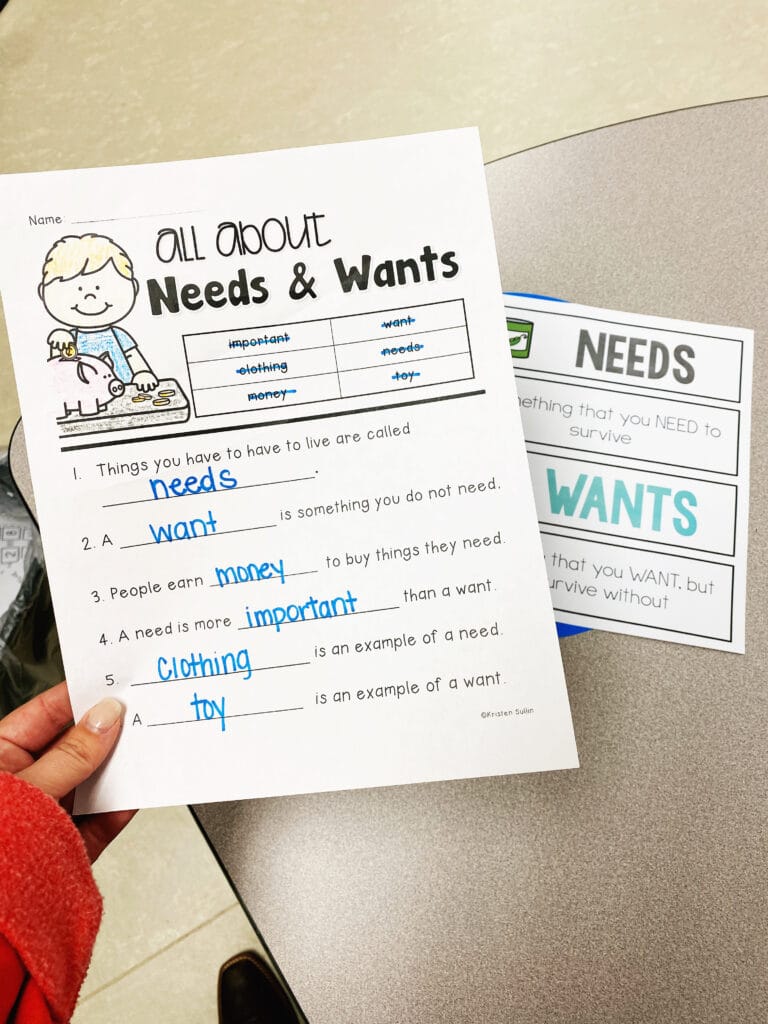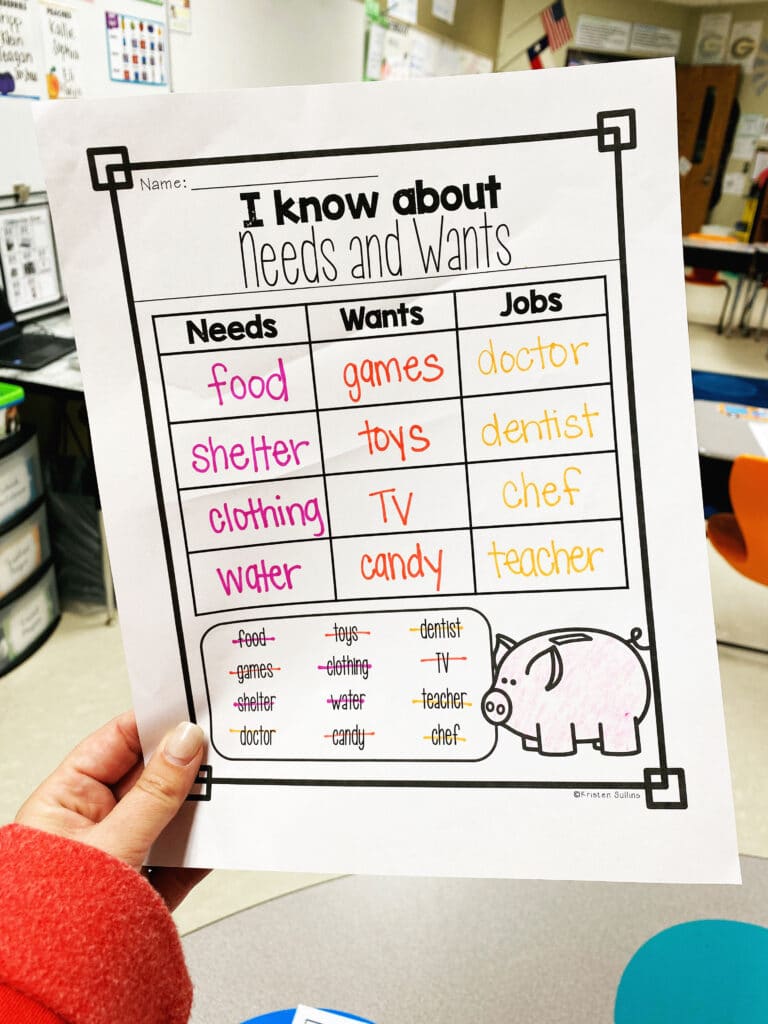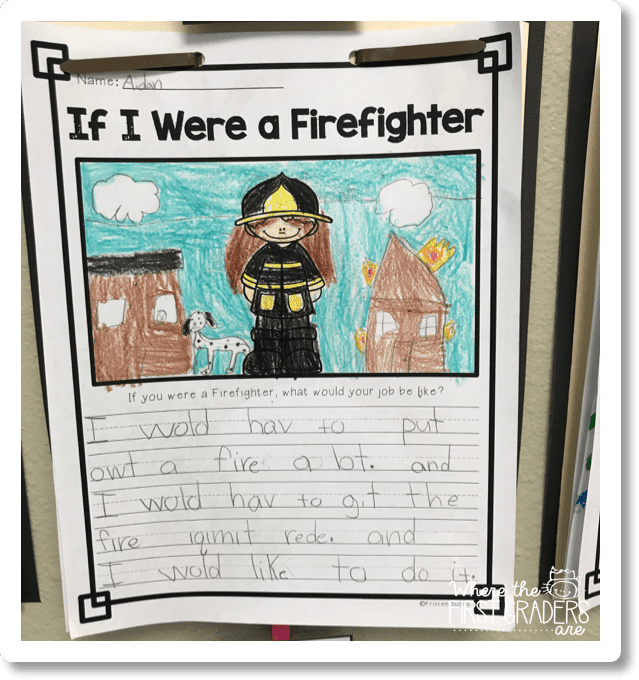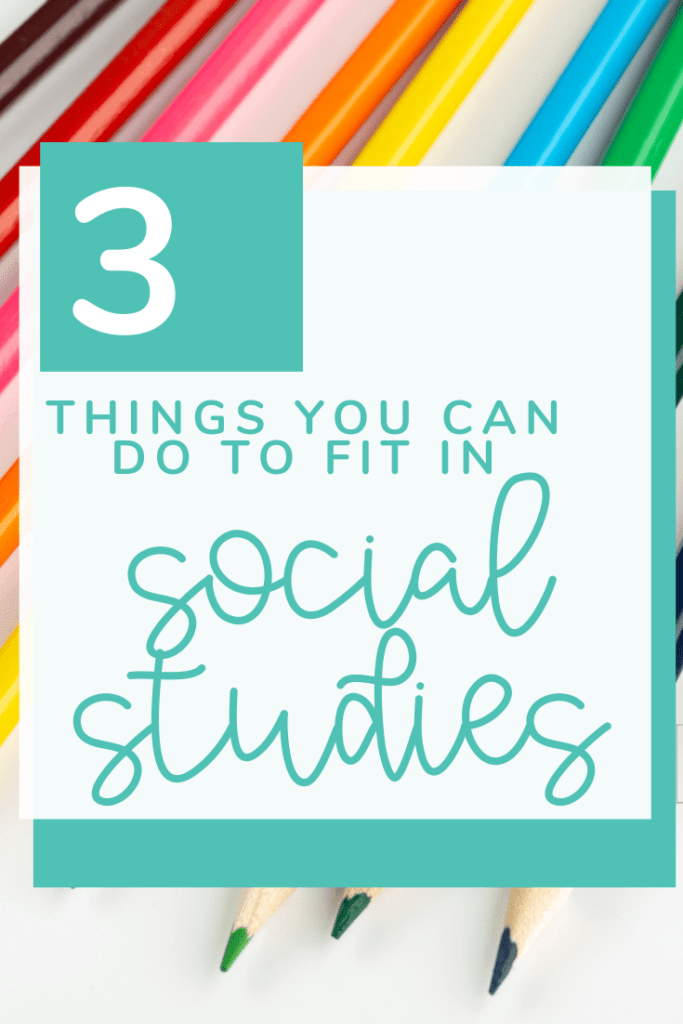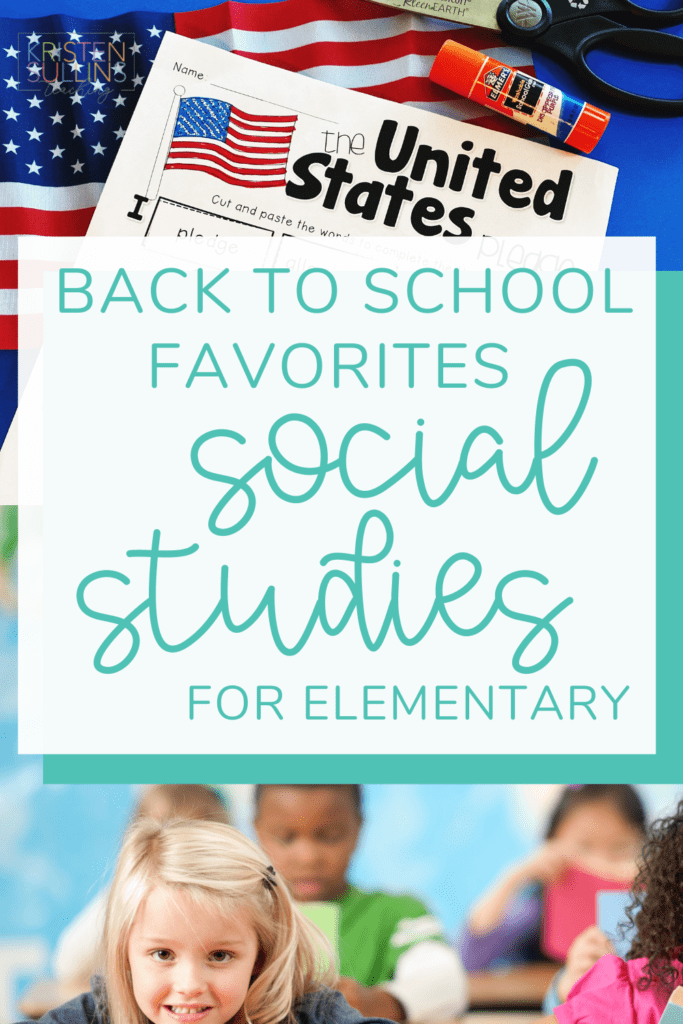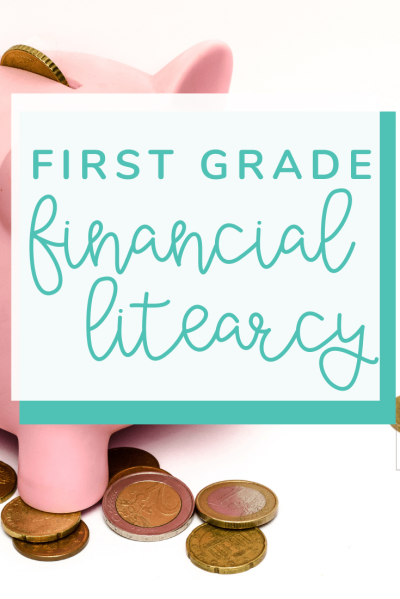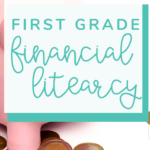Financial literacy is such a fun topic to teach in first grade! I especially love it because I can tie together math, social studies and writing very easily with something that students will interact with DAILY as adults: MONEY.
As a Dave Ramsey fan, I also have a personal agenda to help my students understand early on how important it is to spend AND save!
Oddly enough, kids at this age are sometimes confused about where money comes from and how to make money.
AND when it comes to “Economics”, there’s quite a bit that the State of Texas requires first grade students to know:
- Identify goods and services
- Identify ways people exchange goods and services
- Identify the role of markets in the exchange of goods and services
- Identify examples of people wanting more than they can have
- Explain why wanting more than they can have requires that people make choices
- Identify examples of choices families make when buying goods and services
- Describe the tools of various jobs and the characteristics of a job well performed
- Describe how various jobs contribute to the production of goods and services
This unit gives students a great foundation for how to earn and spend money, what types of things they can spend money on (goods and services) and also why it is important to spend and save.
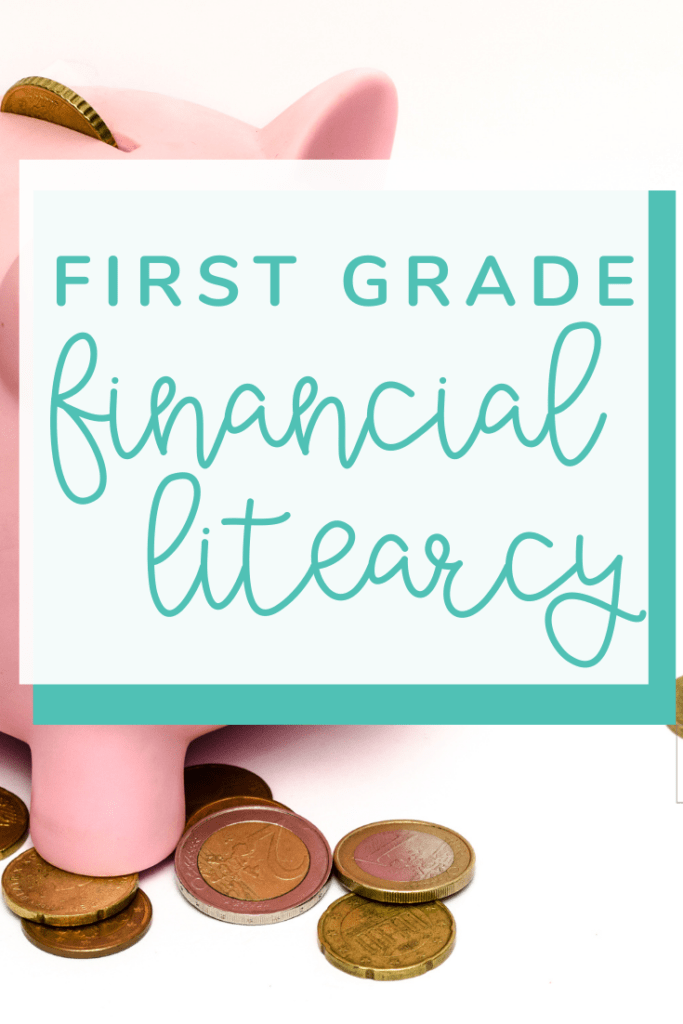
Financial Literacy- Goods and Services
The purpose of explaining goods and services as a part of financial literacy in first grade is to help students understand WHAT they can spend money on.
GOODS are physical materials that a person spends money on that they can take home.
Examples: food, toys, clothes, cars, furniture, computers
SERVICES are things a person pays for, but does not physically take anything home from.
Examples: walking dogs, police officers, fire fighters, hair dressers
How to Identify Goods and Services
Simple sorting activities (such as a cut and paste) are the perfect way to help students distinguish between what items/activities are a good and which are a service.
We typically start by doing this together on the board, then once students understand that goods are typically items and services are provided by people, then they are usually able to finish on their own.
The simplest strategy I have taught my students is to think of a “good” as an item or thing and a “service” as a person.
Ways to Exchange Goods and Services
This may seem like a silly concept to review with your first grade students, but there are actually quite a few ways that people exchange goods and services. Some of them are ways you may not have thought about:
- Buy and sell goods at stores
- Buy and sell goods online
- Exchange a service for a good
- Exchange a good for a good (barter)
The Role of Markets in Goods and Services
The term “market” may sound strange or foreign, but when you explain to students that a market is simply a place where you go to buy and sell things, such as Wal-Mart or a shopping mall, they understand instantly.
A market is “a location where buyers and sellers exchange goods and services, examples include stores, auctions and websites” (TEKS Resource System).
One very important thing to point out to students is that technology has made the accessibility of markets so much easier. Websites such as Amazon have given us access to items that we never had before.
Which also provides better opportunities for the people providing the goods and/or services.
Want to try it out?
Financial Literacy - Needs and Wants
Needs and wants is a simple, yet very important topic for first graders to learn about financial literacy. Most students at this age do not fully understand the concept of money and how much things cost. They simply want their parents to buy them what they want.
It is important for students to understand that income (money) must be spent on things that you NEED before it can be spent on things that you WANT.
This topic can be tricky because students often think they NEED things like a cell phone, so it is very important to explain WHY an object is considered a need or a want.
Examples of people wanting more than they can have:
- Scarcity: never enough goods/services to fulfill the wants of everyone
- People have unlimited demands for energy sources, but nonrenewable resources are limited
Choices about Needs and Wants
Because of situations such as scarcity, people are required to make choices. These choices depend on:
- Price
- Availability
- Location
A situation that our first grade students would relate to is telling them they have $5 to spend at the movie theater. They can use their $5 to buy a bag of popcorn or a box of candy, they have to make a choice.
Now, take the same situation and tell the students they must choose between using their $5 to pay for their lunch, or buying a new toy. That is the choice between a NEED and a WANT.
This is the type of choice that families make on a daily basis to make sure they have everything that they need.
It is also important to talk about how location affects availability and price.
Purchasing fish is much easier and cheaper when you live along the coastline.
Purchasing fish if you lived in Montana would be much more difficult and expensive.
Financial Literacy - Jobs
Jobs and future career choices tie in perfectly with goods and services, needs and wants, and saving and spending.
When talking about Financial Literacy, this is the PERFECT time to tie in career choices because you are talking about services like: Police Officer, Firefighter, Hair Dresser, Dentist and Doctor.
When talking about career choices, it’s important to help students understand the tools of various jobs and the characteristics of a job well performed.
Each job requires specific skills and education. Students should understand that to be good at a job (and ultimately to enjoy what you do), you should have the skills and education necessary for that job.
I always love to use this time to have students do a CREATIVE project about “If I invented a Good” or “If I invented a Service”. Students can get really creative with things that they would create to generate income!
Jobs Contribute to Goods and Services
Finally, jobs are the link that connects goods and services.
We already taught our students that goods are items and services are provided by people.
Easy.
But students also need to understand that people who work in manufacturing contribute to the production of goods. It takes a person to create the good that will be purchased.
Financial Literacy - Spending and Saving
To wrap up this unit on financial literacy for first grade, it’s important to discuss the difference in spending and saving and why each one is important.
We HAVE to spend money on things we need.
We DO NOT have to spend money on things we want.
In order to buy things that we want, we should save our money until we have enough.
It is okay to spend and it is okay to save. It is important that we find a healthy balance of both!
I think it is incredibly important to ensure that kids have healthy money habits at a young age and financial literacy is the perfect unit to teach them!

